Photographs: Courtesy Aniket Vardhan Abhishek Mande
When he was growing up in the '80s and '90s in New Delhi, Aniket Vardhan never once thought he would land up in the US, least of all get a teaching job in a design school there. But he did. Then he threw it all away and decided to design his dream bike -- the Enfield Musket 700cc V twin.
It was sometime in the mid-90s that Aniket Vardhan saw 1942 Harley Davidson WLA in New Delhi and instantly knew he would design a high powered engine for an Enfield.
In 2001 -- the year the Twin Towers fell -- he graduated from Rochester Institute of Technology and realised getting a job wasn't going to be as easy as he thought.
And just when he was about to return to New Delhi, he got the call he was waiting for. Aniket Vardhan finally had a job.
Then about seven years later, he gave it all up and decided to work in a machine shop and design the bike he'd dreamt of on a hot summer afternoon in Delhi.
Could you tell us something about the Enfield Musket 700cc V twin?
The Musket V Twin is basically a modified Enfield (utilising as many Enfield Bullet parts as possible) with a specially new crankcase.
It accepts two 350cc top ends with the potential for higher displacement.
The custom engine mounts allow the engine to fit a stock Enfield Bullet frame with a stretched top tube.
The prototype machine is an attempt to remain faithful to the beautifully proportioned vintage British V twins from the golden age of the 1930s, such as the BSA Y13, the Coventry Eagle, the Royal Enfield K and various AJS and Matchless models.
'My heart was palpitating and I was giddy'
Image: Enfield Musket V TwinHow did the idea for this come about?
It was a hot summer day in Delhi in the mid-90s. In a crowded market near home, I saw this motorcycle.
The immediate impression was of bulbous massiveness and width. The first, most major impact was the engine -- it had two cylinders, which formed a dense, thick, finned 'V' which completely filled the space enclosed by the frame and the exhausts made downward exits from the heads and flowed into one beautiful muffler with a curiously shaped tail.
The carburettor was in the centre and the impression was one of symmetry but with a 'forward flowing' bias.
It was painted in military green, matt with a deep meaningful patina. It seemed to have soaked up half a century of history in the way the paint dulled in areas that had been touched often or were pointing upwards at the harsh Indian sun.
I was absolutely stupefied. The biggest motorcycle I had ever seen was a 500 Enfield and while I'd seen pictures of V twins in books, never had one crossed my path.
It turned out to be a 1942 Harley WLA. As I chatted with the owner about its history, I found my heart beginning to thump in anticipation of hearing it run. What would twice as many thumps as a Bullet sound like?
Some short starting ritual probably followed, then he kicked it. I remember this happened a couple of times with a very seductive sucking sound from the carb.
And then, all of a sudden, it burst into life with this satisfyingly thick, bassy, meaty galloping sound.
My heart was palpitating by now I was giddy and quite beside myself. After a few revs he let go of the throttle and it began to idle.
And that's when the sound that would take over my brain first made its pulsating impression on my eardrums. I have to describe it.
Thump-thump-pause-thump-thump-pause-thump-thump....
'I had to finish the job, somehow, someday'
Image: Enfield Musket V TwinThere was this curious uneven space between its beats and it wasn't until a while later that I realised why that sound mesmerises so many of us who stop and stare when we hear a Harley or other classic V twin idle correctly.
That visceral sound is the closest that a mechanical contraption can mimic a human heartbeat. Our hearts too, sound exactly like unevenly spaced thumps. Go stick your ear on the chest of the adored one; confirmation is inevitable.
And here is the even more eerily appropriate metaphor. There were moments when it would rhythmically miss on one of the cylinders and the pulses became a "tug-a-dug, tug-a-dug", which sounded exactly like a galloping horse.
Or, more accurately, the way small boys try to sound like one as they play, tugging at imaginary reins in the breeze.
Beating hearts and galloping horses...evoked by this magnificent steed of steel with history hiding in every nook. No surprise that I fell hopelessly and permanently in love right then and there.
It was but a short step from this for me to suddenly realise that the Bullet is already 'half of a v-twin'.
I had to finish the job, somehow, someday.
'The first foundry ruined my castings'
Image: Enfield Musket V TwinCould you tell us how you went about making the Musket?
V-twin -- the challenges you faced, the high points and times when you thought you would never make it?
The official, serious beginning was in 2003 when I brought back to the USA the old Bullet engine I had in my room back in Delhi.
I used this to measure all the critical dimensions and internal components, which I had to use in my new design. I modelled all of these in CAD and began to explore various alternative directions. My overriding design goal was to use as many standard Bullet engine parts as possible, with minimum custom made parts, so the user could easily ride and maintain his/her bike economically and conveniently.
This decision finally led to the best design configuration. This process went through about 40 developments in CAD modelling to reach the final design.
I then printed drawings and used them as templates to start building a wood pattern. A pattern is the exact same shape as the one you want to cast in metal.
This wooden shape is used to make a sand mould, which then allows us to make a casting.
Sand casting is one of the oldest and most affordable means to make castings. This took a couple of years, during which I also came across the 'Carberry' Enfield, which was a big blow to me, seeing that the Enfield V twin had been done.
But I realised that their approach was different and since I had put in so much work, I decided to continue.
The first foundry I tried to get castings from pretty much ruined my patterns by carelessly letting them get wet in the rain from an open window.
That was one of the darkest days of my life.
'I became a raving maniac!'
Image: Enfield Musket V TwinAfter a couple of months to recover, I went back to work, rebuilt the damaged portions and found a new foundry.
These guys were great and I finally had castings. I then approached the machine shop run by the father of one of my students and started to work there in my spare time to learn how to machine.
It was now 2008 and in May, I quit my faculty job and began to devote all my time at the shop. I began to work there part time and work on the engine in the evenings. I would sometimes be there as late as 2am, enjoying myself thoroughly.
I learnt a lot as I went along and did some pretty involved machining on the manual machines. Some mistakes were made but the expert welder at the shop filled up the 'wrong hole' and I redid them.
Finally, on Jan 23, 2009, late at night, everything was ready, assembled, polished, with petrol and battery hooked up.
My heart pounding, I kicked it over a few times but nothing happened. I realised that I had the spark plug cables hooked up to the wrong coils! I swapped them, kicked, and the beast just started up!
I cannot put into words the emotion I felt. I became a raving maniac!
A couple of months later I began to install it into the frame, which took a few weeks as everything had to be figured out for the first time.
The first ride was exhilarating and tense, wondering if it would blow up. All it did wrong was to furiously slip the clutch, which was unable to handle the extra power.
6000 kms later, it is running better than ever and I've hit 160kmh on the speedometer a few times.
'Did you go to the US to become a mechanic?'
Image: Enfield Musket V TwinWhat did your family have to say about your choices?
Ah! What can I say? Compared to the typical 'doctor-engineer-MBA' hungry parents, they have been very supportive.
Actually, by any standards, they have been my best friends. They even stood by my decision to quit my job as assistant professor after six years, to devote all my time to the Musket V Twin.
But I have to admit, sometimes, just a bit, I do hear... "Beta, kya tum America mechanic banne ke liye gaye thay? (Did you go to the US to become a mechanic?)" (Smiling).
Could you tell us a little about your life in the US? You mentioned you graduated in 2001 (when the Twin Towers fell). I would appreciate it if you could tell us about those times.
I came to the US in the 1999 fall. I landed in LA, where my brother had just finished film school at UCLA and was blown away by the sheer scale of everything.
Soon after I headed to Rochester, where the average snowfall is several feet. For a Delhi guy, I handled it pretty well!
Those days feel like a dream now -- getting used to so many systems and technologies in place and the fact that every single space was centrally heated and cooled.
I graduated in May 2001 and in June I headed to LA to begin job hunting. In just a few months, the world as we knew it was going to change.
To the microscopic brown dot that was me, it meant that it was impossible to find a design job.
There were many encouraging interviews and positive comments but no dice 'till things get better' particularly because I was a foreign student and would need a work permit with all the associated hassle.
Frustrated with this endless soul-sapping search, I decided to have one last hurrah.
I began to look for an old motorcycle and found a 1977 Yamaha XS650 (it is a widely loved classic -- Yamaha's version of the British parallel twin), for the grand sum of $200!
'Life at a big college is so packed you have no time to feel lonely'
Image: Enfield Musket V TwinIt was an incomplete, rusty heap. On a shoestring budget, aided by Ebay, I got it running and looking pretty. It was the best mood lifter ever. The rides on Sunset Boulevard on that bike, late at night, were like living in a dream.
Finally, in December, I heard back from the Columbus College of Art and Design.
They flew me in for an interview, after a couple more months and when I was just about to buy my ticket back to Delhi, I heard that they were ready to hire me!
That was good news after a long hard time.
What kind of challenges did you have to face to find your feet in the US?
The sudden, heart-numbing impact of the realisation that I'm all by myself, alone, thousands of miles away from home and I know no one here at all (etc) is a bit of a trial.
But, life at a big college is so packed that you have no time to feel lonely. You make friends quickly, urgently, with others from lands as far away as your own, giving each other the solace and sense of family that just magically materialises when you are far from home.
I had friends from Cyprus, Chile, Morocco, Germany, Hong Kong, Taiwan, Korea, China and of course, India, to name a few and lots and lots of cheery and generous Americans, with whom I talked a lot about cars and engines.
Could you tell us something about your teaching job?
I taught sophomore and junior design studio, furniture design, toy design, 3D computer modelling, concept sketching... a bit of everything actually.
It was quite rewarding to teach young minds how to become creative problem solvers, with skills that cross 2D and 3D, digital and hand, artistic and technical.
It is quite an all-encompassing subject.
'There comes a time when one simply must follow an inner voice'
Image: On rediff iShare: Enfield V TwinWhy did you quit it and when?
I quit in 2008 because teaching involved dealing with the projects and ideas of scores of students everyday and it left me with little energy to pursue my own.
There comes a time when one simply must follow an inner voice which asks the question, 'What are you really dying to do? What would you rather be doing right now if you were to die tomorrow?'
A bit morbid, I know, but an effective way to sift through choices.
How do you earn your bread and butter now?
I'm a proud blue-collar machinist these days. The machine shop where I built the engine is my current workplace.
I do manual lathe work, manual milling and lots of CNC (Computerised Numerically Controlled) work.
I learnt all manual machine work while actually figuring out how to build the engine and later picked up CNC programming.
I now have the skills to make the entire engine crankcase on CNC.
Could you describe a typical day in your life?
I am up at 8am and at work by 9. By 5 I am home, after which I make tea, dip Parle G and watch a snippet of an old bollywood flick to get into the mood.
At 6:00 I begin work on the production (of the v-twin) engine design, which is about 90 per cent done (and is in) the casting pattern building stage.
This is the slowest part because I have to make sure every little detail is there before it gets sent for casting.
Lots of staring gets done, visualising potential problems while machining, assembly, use, maintenance etc.
An error caught now is an easy fix. The later you catch an error the more expensive it gets to fix.
I work till 9:00, after which I do some cardio -- take a walk/bicycle.
Then I work some more, shower by 11pm, read for a while or get online, then sleep.
This boring routine gets broken by the occasional motorcycle ride on a good day, meeting up with friends and the odd cultural outing.
'I was usually dreaming about some project'
Image: on Rediff iShare: Enfield Musket V TwinCould you tell us something about your family?
My parents separated very early. Brought up by my mother and aunt who was like a parent.
My mother is a widely respected writer and critic of Hindi literature and also taught at Miranda House College.
She retired this year but continues to write and edit. My aunt taught history at Miranda House and was a highly respected firebrand intellectual of Delhi University.
I have an elder brother -- Akshat Verma, the much talked about writer of Delhi Belly.
My father taught English and shares my love for old things in general.
It is an interesting family.
Could you tell us something about your school and college days?
My childhood was spent at 'Shiv Niketan', a very different sort of kindergarten, run by Ms. Elizabeth Gauba, a wonderful German educator with very different ideas on learning.
Those years of hands-on, multi-dimensional learning through play were invaluable in bringing out my creative spirit. I later shifted to Springdales School and was mostly decent in my studies but have to admit, my mind was usually dreaming about some project or the other, sketching and doodling on the back cover of my notebook.
I was always making a highly detailed model car of my own design out of cardboard and paper, various scientific working models pertaining to anything from light rays to electric motors to airplanes. The coolest one was a battery-operated cable controlled car that had a functional 4-speed gearbox and independent front suspension using ballpoint pen springs. You could steer, go forward, reverse and change gears- all from the hand-held controls. (I still have a photo of this).
I also loved to draw, paint and write, yes, there was a little bit of the writing bug in my blood but I gave it scant attention, being too interested in tinkering.
In my 11th grade I heard Jimi Hendrix's Voodoo Chile and was immediately obsessed with the spine chilling sounds of his guitar. I then devoted an inordinate amount of time to figuring out the electric guitar and built one from scratch, including the pickups, with the barest of hand tools.
It looked quite spiky and mean, was painful to play and was capable of serious noise when hooked up to the unfortunate home stereo via the little two-in-one which worked as the overdrive.
My school principal was surprisingly delighted by the project and had me play it in morning assembly. I still remember playing the intro to 'Sweet Child o' Mine', the only time in the history of Springdales that the morning began with metal.
The next, much improved guitar also served as the 'Physics Project' required by the 12th grade board exam. The external examiner was a really good sport, laughed her head off when I told her how the guitar works because the vibrating strings generate an induced EMF in the pickup coil because they cut across it's magnetic field (quite accurate by the way), she then told me I was a total nutcase but gave me an A+ anyway!
I studied architecture, at the School of Planning and Architecture (SPA).
College days were spent fighting with the part of me that loved things that worked, moved, ran, spun, did something... as opposed to buildings that sort of just... stood there.
My several architect friends will stab me in the backside with a t-square, but what can I say, in spite of my best efforts to stay awake, I had to accept that after getting a well-rounded education in the 'mother of all the arts', I had to leave her.
What I did get from it was the realisation that in my work, I sought the marriage of science and art, reason and emotion, logic and instinct.
'A car with the bonnet open would get me excited!'
Image: on rediff iShare: Enfield Musket V TwinCould you tell us something about your family?
When did the love for biking come about?
When I rode a bike for the first time. It felt really natural. It was a Yamaha RX100. I also love riding bicycles by the way.
You call yourself a machinist. Was that spark always in you or was it something you picked up along the way?
I think I was born to make things. I began with paper and cardboard, glue and scissors. Went on to wood, saws, drills and chisels. Metal was but the next step. Of course, metal can be shaped in myriad ways using hand tools but highly precisely dimensioned work needs the right machines like lathes, Milling machines, Electric saws, vertical drill presses etc.
While still in India, years before I was to even come close to one of these machines, I tried to find books on them and learn exactly how they worked.
Did you tinker around a lot with machines as a child? Did you end up messing up your mum's mixer or dad's car for instance?
Good god, where do I begin? There wasn't anything in the house that hadn't been taken apart to 'see what was inside'.
Record player, water heater, radio, cassette player, mixer, name it and it had been 'observed'.
What would get me most excited? A car with the bonnet open!
I'd run to it, start annoying the guy with -on stop questions about carburettors and distributors and jets.
From what I remember, my big catastrophe when I was six was adding engine oil to the radiator of a family friend's car.
'I learnt to drive in my early teens'
Image: On rediff iShare: Enfield Musket V TwinHow old were you when you started driving? What was your first bike/car?
I learnt to drive in my early teens -- my aunt would sometimes let me hold the steering wheel and even change gears while she drove.
I was then allowed to drive our Fiat inside the colony, which was my greatest joy.
My first bike was, what else, a classic black 350 Bullet.
It was a monumental, mega-gift from my aunt, who never stopped cursing the day she gave it to me, never realising that she had fired the first 'bullet' in a never-ending battle that continues to this day.
The many hours I spent tinkering with it when I should have been drawing architectural floor plans were shameful, I tell you!
When did you first see a Bullet?
I can't remember the first one but I very clearly remember staring at them as a child, looking at all the timing cover, the rocker boxes and the very distinctive headlamp case with it's tiny 'eyes' on either side.
When did you ride the first Bullet?
A friend of my brother had one for sale when I was still looking, around 1995. We went to check it out. He asked me if I wanted to try it.
Shaking with excitement, I followed the starting drill, ammeter needle centre, firm kick and it started to thud steadily right away. I couldn't help a wide grin as I clicked up into first, slowly let in the clutch and its smooth torque pulled away without hesitation.
'In India, we had extremely limited exposure to computers'
Image: Enfield Musket V TwinAfter finishing architecture, I interned at an industrial design firm in Delhi -- Incubis. It is now one of the top firms in the country. I felt that I should pursue this direction further and got accepted into the Masters program at the Rochester Institute of Technology (RIT) in upstate New York.
How did your educational background in India help you in your course there? Or did it?
It did to a certain extent but most of it was new and fresh. Sketching is the backbone of industrial design and for a fresh graduate; it should be coupled with serious 3D computer modelling skills.
To this, add branding, extensive research into user needs, human factors, emerging technology and environmental impact.
At SPA in Delhi, we had extremely limited exposure to computers and in fact, the director at the time greatly disapproved of computer prints as opposed to hand drafting.
At RIT, on the other hand the very first 3D modelling class I took was in ALIAS Studio, which was just about the most advanced surface modelling software in the world, used by the world's top car and product manufacturers.
In the beginning, it was like a barrage of advanced rocket science being fired at a toddler. I was that clueless.
But, about a month later, I suddenly began to get it, fell in love with it and ended up with some of my own cool tricks.
What are the plans for the immediate future?
I have begun work on design tweaks to allow a 1000cc version due to very high interest.
The plan is to offer crankcase kits ready to accept top ends and transmission for fitment into a stretched stock or custom frame.


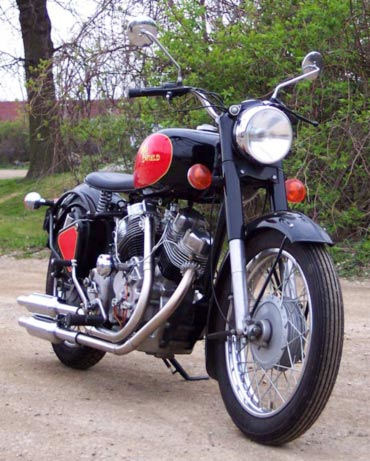

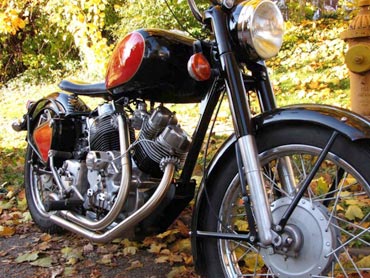
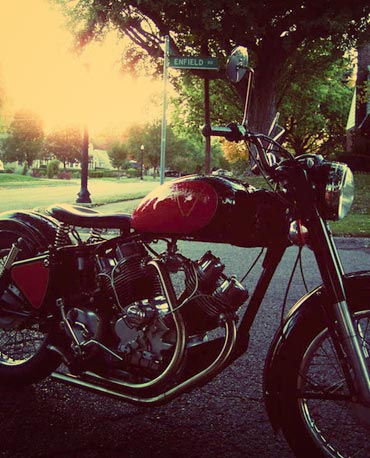
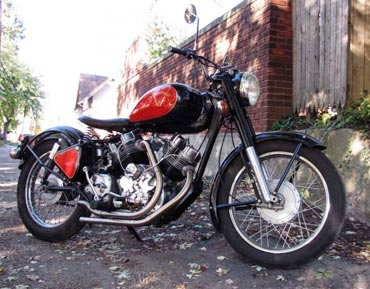
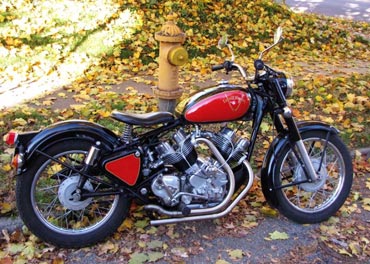
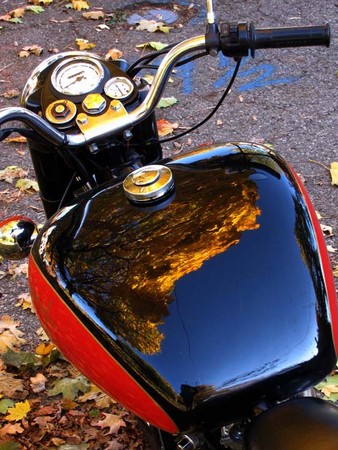
Comment
article